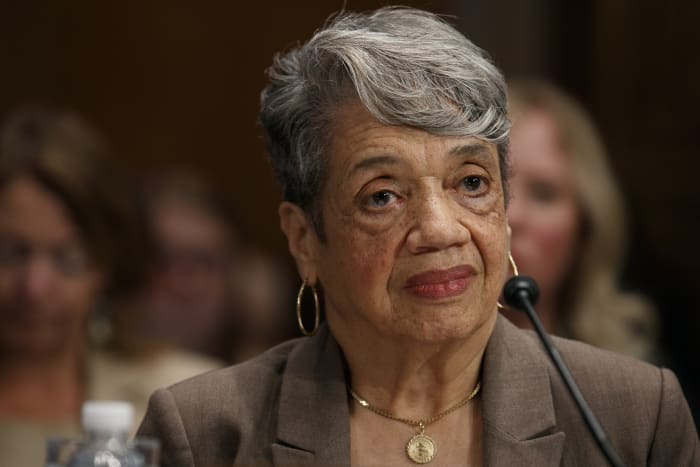
NEW YORK – The hidden figures of the space race were recognized with Congress’ highest honor at a medal ceremony on Wednesday.
The Congressional Gold Medal was presented to the families of Katherine Johnson, Dorothy Vaughan, Mary Jackson and Christine Darden at the U.S. Capitol. Darden watched the ceremony from her Connecticut home.
A medal was also given to all the women who worked as mathematicians, engineers and “human computers” in the U.S. space program from the 1930s to 1970s.
“By honoring them, we honor the very best of our country’s spirit,” said author Margot Lee Shetterly, whose book “Hidden Figures” was adapted into a film in 2016.
The National Advisory Committee for Aeronautics – a precursor to NASA – hired hundreds of women to crunch numbers for space missions. The Black women hired worked in a segregated unit of female mathematicians at what is now NASA’s Langley Research Center in Virginia.
Johnson’s hand-written calculations helped John Glenn become the first American to orbit the Earth in 1962. She was awarded the Presidential Medal of Freedom in 2015 – the nation’s highest civilian honor.
Vaughan rose to become NASA’s first Black supervisor and Jackson was NASA’s first Black female engineer. Darden is best known for her sonic boom research.
___
The Associated Press Health and Science Department receives support from the Howard Hughes Medical Institute’s Science and Educational Media Group. The AP is solely responsible for all content.
Copyright 2024 The Associated Press. All rights reserved. This material may not be published, broadcast, rewritten or redistributed without permission.
In a recent ceremony at the U.S. Capitol, the unsung heroes of the space race were honored with Congress’ highest accolade – the Congressional Gold Medal. The families of Katherine Johnson, Dorothy Vaughan, Mary Jackson, and Christine Darden were recognized for their groundbreaking contributions to the U.S. space program.
These remarkable women, often referred to as the “hidden figures,” played a pivotal role as mathematicians, engineers, and “human computers” from the 1930s to the 1970s. Their work, previously overlooked, was instrumental in the success of numerous space missions.
Author Margot Lee Shetterly, whose book “Hidden Figures” shed light on their extraordinary achievements, emphasized the importance of recognizing and honoring these trailblazing women. The ceremony also paid tribute to all the women who worked tirelessly behind the scenes at what is now NASA’s Langley Research Center in Virginia.
Katherine Johnson, in particular, was instrumental in John Glenn’s historic orbit around the Earth in 1962. Her meticulous calculations were essential to the success of the mission and earned her the prestigious Presidential Medal of Freedom in 2015.
Dorothy Vaughan and Mary Jackson, the first Black supervisor and the first Black female engineer at NASA, respectively, also received well-deserved recognition. Christine Darden’s groundbreaking research on sonic booms further solidified their lasting impact on the aerospace industry.
The ceremony was a poignant reminder of the invaluable contributions these remarkable women made to the field of space exploration. Their legacy continues to inspire future generations of scientists, engineers, and mathematicians.






